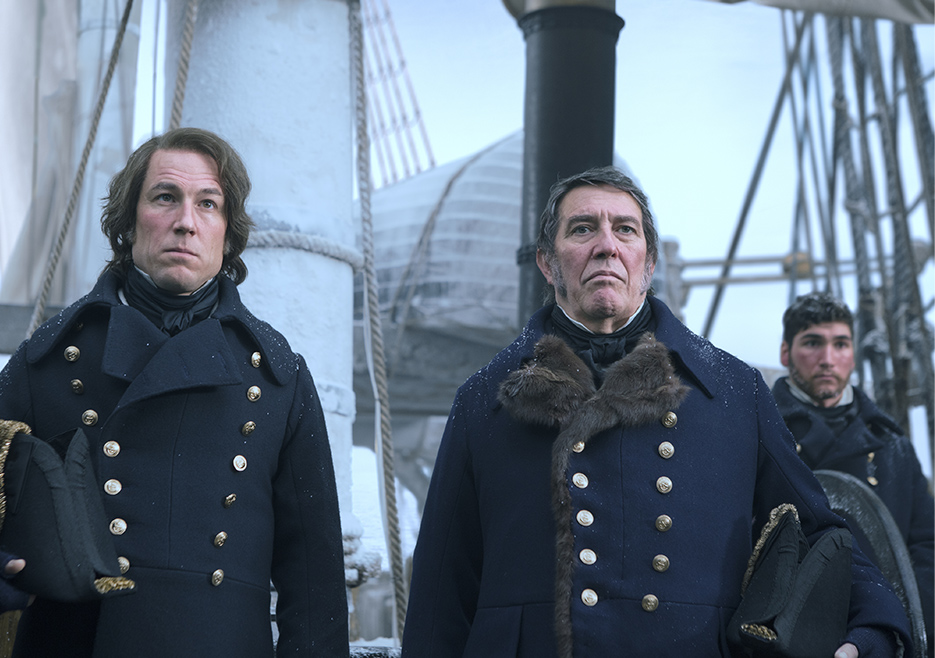‘Make no mistake about it, Franklin lives’
Why the story most famously disastrous Arctic expedition still fascinates audiences more than a century and a half later.

Arctic explorers by the dozen have been forgotten, but John Franklin’s name endures because of the way he and his men died trying to complete the Northwest Passage.
The search for Franklin and the struggle to piece together the greatest disaster in Arctic history remain one of the enduring mysteries of the region.
For all that Franklin symbolizes about the past for those who study history, the resurrection of search efforts for his lost ships by Parks Canada in 2008 speaks to present politics and efforts to solidify Canada’s claims to control waterways of the High North.
Though the wreck of HMS Erebus was discovered in 2014 off the Adelaide Peninsula and the remains of HMS Terror were found two years later, about 40 miles north, preserved for all time in the waters of Terror Bay, questions that may never be answered still tantalize investigators.
Visitors to the Canadian Museum of History in Quebec can now see the bell recovered from the Erebus and the 1848 note left on King William Island reporting the death of Franklin and the decision to abandon the ships after being locked in ice for two years.

But the most visible Franklin exhumation at the moment is taking place every Monday on the AMC cable drama series “The Terror,” introducing millions to the rough outlines of the tragedy.
The series is based on the 2007 Dan Simmons novel in which Franklin’s men are plagued by cold, starvation, cannibalism and other horrors—that much is true—as well as a terrifying supernatural monster that wants them dead. That much is not true.
Russell Potter, author of “Finding Franklin: The Untold Story of a 165-year Search,” writes that the fictional horror on the 10-part series is of a different kind, but “the show captures the bleak realism of Franklin’s ill-fortune with remarkable clarity.”
“The Terror” also conveys the claustrophobic atmosphere in 1846 of life on HMS Erebus, a name borrowed from Greek mythology about a place of darkness, and HMS Terror, another converted warship to be feared.
The ships are reproduced in detail for the TV audience and serve almost as supporting characters, representing the pride of 19th century England and its technology, daring to confront the Arctic.
HMS Terror had been one of the ships that attacked Fort McHenry when Francis Scott Key wrote “The Star Spangled Banner,” but in 1846 it and Erebus had lost all power to strike fear in enemies—locked as they were in the ice off King William Island.
Engineers had modified Erebus and Terror to carry steam engines and installed iron plating.
No previous expedition had been as well fortified and the ships carried everything from two tons of tobacco to large libraries for what was expected to be a three-year voyage under Franklin, a man whose history is redefined with each new telling of his story.
The TV series presents him as a commander prone to excessive pride and yet conscious on some level of his failings.
He is both a gallant adventurer and an ill-prepared intruder, unable to learn from the Inuit or to recognize the peril he has led his men into.
The second-in-command, Francis Crozier, correctly warns other officers that “Our situation is more dire than you may understand.”
Before Franklin, there was the centuries-long dream of European powers to find a faster way of reaching China and India, a passage that would have meant financial gain from reduced travel time.
Repeated attempts to find a path through the ice-choked waters, starting with John Frobisher in 1576, provided enough evidence of progress to tantalize successive generations to continue the quest.
The TV series adds to an evolving blend of fact and fiction about Franklin that has entered the imagination through stories, plays, paintings, poems and songs.
To many in Canada, the words of “Northwest Passage” by Stan Rogers, have come to represent an unofficial anthem: “Ah, for just one time I would take the Northwest Passage, to find the hand of Franklin reaching for the Beaufort Sea. Tracing one warm line through a land so wild and savage, and make a Northwest Passage to the sea.”
The museum exhibition, the work that has just started as to what secrets are contained on the wrecked ships and the televised drama all reinforce something that Canadian novelist Margaret Atwood said in a 1991 lecture on the doomed expedition: “Make no mistake about it, Franklin lives.”
Columnist Dermot Cole lives in Fairbanks. He can be reached at [email protected].